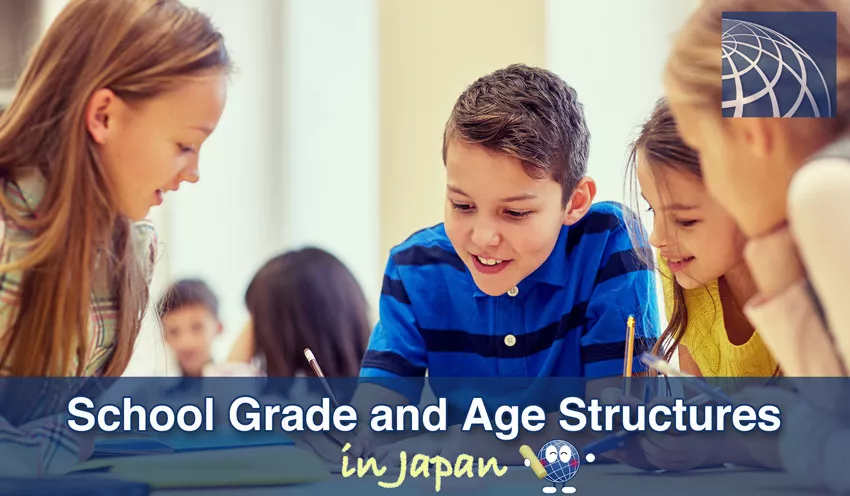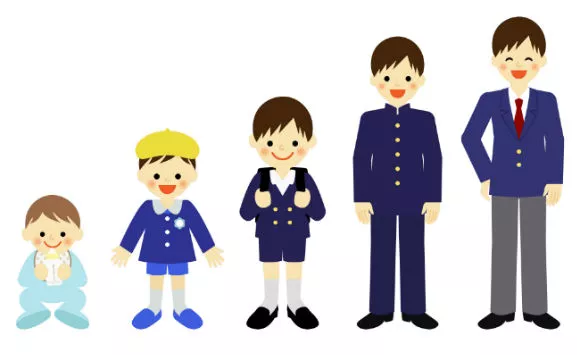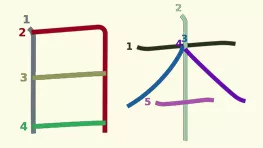School Grade and Age Structures in Japan

The education system and structures vary from country to country. Here we have made an easy to understand comparison between the ages and grade structures in Japan and other countries. You can also find a list of what the ages for compulsory education in each country is and how to use that information choose a grade in Japan. Japan is also highly invested in early education, with young children often starting preschool around 2.5–3 years old.
How to choose a school grade by age in Japan
In Japan, the school year starts in April and ends in March. Children who were born between April 2nd and April 1st of the following year are placed within the same grade. This could change your child's grade when you move to Japan from another country.
If your child has difficulty in accepting the Japanese grade which matches their age, you can also ask the school to change the grade to a lower grade. This usually happens when a foreign child enrolls in a Japanese public school because it is hard for them to understand everything in Japanese.
Compulsory education in Japan lasts from the 1st grade of Elementary School to the 3rd year of Junior High School (9 years in total). Foreign children/students can also have the option to enroll in a Japanese public school, however it's not mandatory that they participate in the Japanese compulsory education. International schools in Japan follow the system of each country however, Japanese public schools and private schools follow the same system. For more information, please read Japanese education system and which school is the best for your child.

Comparison between the Age and Grade Structures in Japan and other countries
*swipe or scroll to see the complete table
| Age | Japan | Australia | U.K. | U.S.A. |
| Apr - Mar | Jan - Dec | Sep - Aug | Sep - Aug | |
| 3-4 | Kindergarten | Kindergarten | Nursery | Nursery |
| 4-5 | Kindergarten | Kindergarten | Reception | Pre-K |
| 5-6 | Kindergarten | Prep Year | Year 1 | Kindergarten |
| 6-7 | ELMN 1 | Year 1 | Year 2 | Grade 1 |
| 7-8 | ELMN 2 | Year 2 | Year 3 | Grade 2 |
| 8-9 | ELMN 3 | Year 3 | Year 4 | Grade 3 |
| 9-10 | ELMN 4 | Year 4 | Year 5 | Grade 4 |
| 10-11 | ELMN 5 | Year 5 | Year 6 | Grade 5 |
| 11-12 | ELMN 6 | Year 6 | Year 7 | Grade 6 |
| 12-13 | JHS 1 | Year 7 | Year 8 | Grade 7 |
| 13-14 | JHS 2 | Year 8 | Year 9 | Grade 8 |
| 14-15 | JHS 3 | Year 9 | Year 10 | Grade 9 |
| 15-16 | HS 1 | Year 10 | Year 11 | Grade 10 |
| 16-17 | HS 2 | Year 11 | Year 12 | Grade 11 |
| 17-18 | HS 3 | Year 12 | Year 13 | Grade 12 |
Education System in Japan

- School Year
- From April to March
- Grade Division
- Children born between April 2nd and April 1st of the following year are placed in the same grade.
- Elementary School
- ELEM 1 to 6
- Junior High School
- JHS 1 to 3
- High School
- HS 1 to 3
- Compulsory Education
- From Elementary School to Junior High School
For more information please refer to Guidebook for Starting School published by Ministry of Education in Japan.
Education System in Australia

- School Year
- From the end of January or beginning of February to December
- Primary School
- Prep Year to Year 6 or 7
- Secondary School
- Year 7 to 10, or Year 8 to 10
- Senior Secondary School
- Year 11 to Year 12
- Compulsory Education
- From Prep Year to Year 12
For more details, please visit Australian Government - Department of Education.
Education System in U.K.

- School Year
- From September to August
- Primary School
- Year 1 to 6
- Secondary School
- From Year 7 to 11
- Secondary School or College
- From Year 12 to Year 13
- Compulsory Education
- England: Age 5 years to 18 years
- Scotland and Wales: Age 5 years to 16 years
- Northern Ireland: Age 4 years to 16 years
For more details, please visit UK government information website.
Education System in U.S.A.

- School Year
- From September to August
- Elementary School
- Grade 1 to 5 (5-3-4)
- Grade 1 to 6 (6-2-4) (6-6)
- Grade 1 to 8 (8-4)
- Junior High School
- Grade 6 to 8 (5-3-4)
- Grade 7 to 8 (6-2-4)
- High School
- Grade 9 to 12 (5-3-4) (6-2-4)
- Grade 9 to 12 (8-4)
- Grade 7 to 12 (6-6)
- Compulsory Education
- Age 5 years to 18 years (from Kindergarten to Grade 12 - K12)
* The system varies between different states. For more details, please refer to the department of education of the state you would like to know.
>> List of international schools in Japan
>> Primary - Elementary School System in Japan
>> Enrolling in a Japanese public school and materials you need to prepare

- Rental Apartments & Houses in Tokyo
- Listings of popular and luxurious rental apartments, condominiums, and houses designed with expats in mind.

- Apartments & Houses for Sale in Tokyo
- Listings of apartments, condominiums, and houses available for purchase in Tokyo.



















